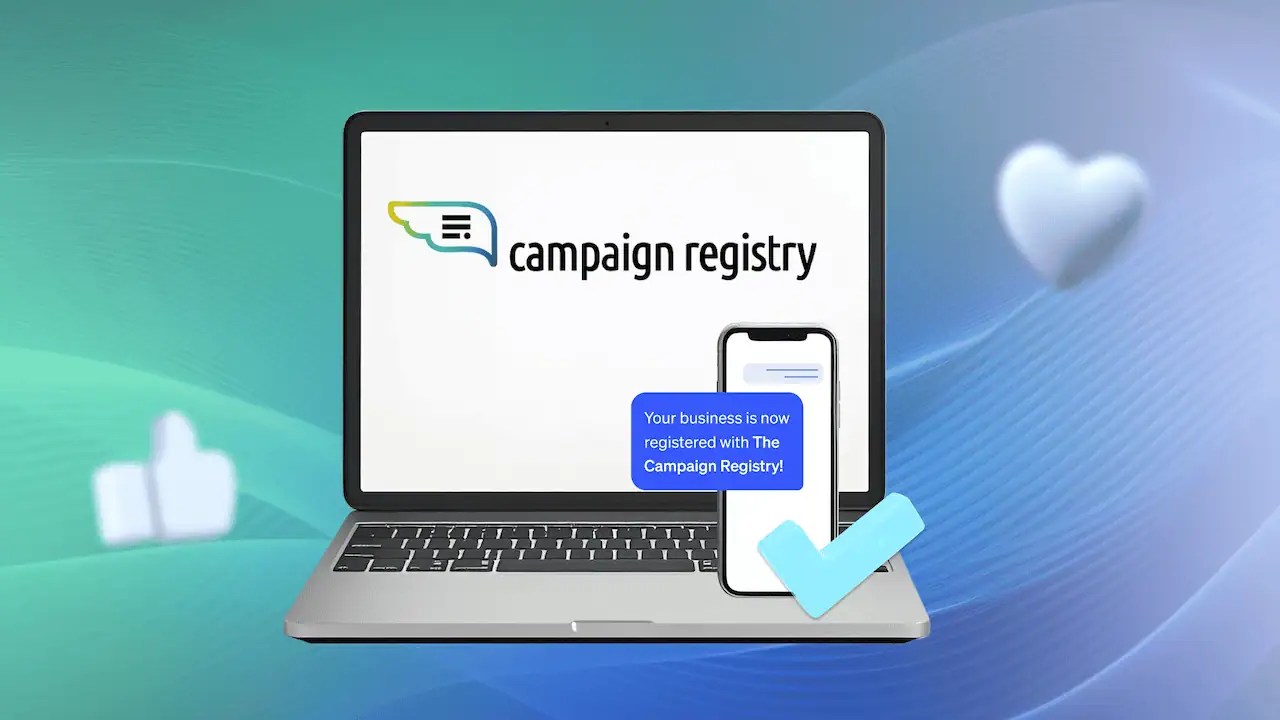Running a successful call center today means more than just hitting KPIs — it requires continuous improvement, strategic planning, and a clear understanding of your internal capabilities and external environment.
That’s where a SWOT analysis comes in. For call center owners, managers, and CX leaders, this simple yet powerful framework can uncover hidden strengths, expose operational gaps, and highlight growth opportunities in a competitive landscape.
Not starting your SWOT could lead to many things:
- Competitors move faster than you
- Poor customer experience
- Staff leave for new jobs
- Low employee morale
- Customer churn
In this article, not only will you learn why a call center SWOT analysis is so valuable for CX strategy, but how to conduct a SWOT analysis, as well as common challenges to watch out for.
What Is a Call Center SWOT Analysis?
A SWOT analysis is a strategic planning tool used to evaluate the Strengths, Weaknesses, Opportunities, and Threats affecting your business or department—in this case, your call center.
It’s a simple but powerful way to get a clear view of what your team does well, where there’s room for improvement, what opportunities you can capitalize on, and what external risks you need to prepare for.
A typical SWOT is laid out in a four-quadrant grid:
- Strengths – Internal advantages your call center currently has
- Weaknesses – Internal challenges or gaps that may be holding your team back
- Opportunities – External trends or openings your team can leverage
- Threats – External factors that could negatively impact performance or growth
The top half of the SWOT (Strengths and Weaknesses) focuses on internal factors—things you can control. The bottom half (Opportunities and Threats) highlights external factors you may not directly influence but should plan for.

Why SWOT matters for call centers
In today’s competitive CX landscape, it’s no longer enough to rely on instinct or routine reporting. A SWOT analysis helps call center leaders take a step back and evaluate their operation strategically.
It brings clarity to what’s working, what needs fixing, and where future opportunities lie—whether that means leveraging experienced agents, making use of technological advancements, or preparing for market shifts.
Here’s a sample of what your SWOT categories might include:
Strengths:
- High NPS or CSAT scores
- Well-trained, experienced agents
- Modern contact center solution
- Ongoing training and development programs
Weaknesses:
- Outdated processes or tech stack
- Skill gaps or inconsistent training
- High agent turnover
- Lack of documentation or SOPs
- Unreliable technology
Opportunities:
- Promote veteran agents into leadership roles
- Implement AI or self-service features
- Use customer feedback to build case studies
- Analyze competitors for service gaps
Threats:
- Rising customer expectations
- Declining customer service operations
- Growing competition
- Negative online reviews
- Increasing customer and/or employee churn
By identifying these elements, you can build smarter, actionable strategies that improve service quality, agent performance, and customer loyalty, all while staying ahead of challenges.
Benefits of Conducting a Call Center SWOT Analysis
Every call center strategy should include a plan for continuous improvement. Without it, even high-performing teams risk stagnation—leaving the door open for competitors to get ahead.
A SWOT analysis gives you a structured way to assess your current position, uncover growth opportunities, and sharpen your competitive edge, all in the name of providing superior customer service.
Here’s how a call center SWOT analysis adds real value:
1. Improved strategy and decision-making
A well-executed SWOT analysis provides a clearer picture of your call center’s landscape. This insight helps managers and CX leaders make better, faster decisions—whether you’re planning to adopt new technology, restructure teams, or optimize customer workflows.

2. Better understanding of internal and external factors
Your internal factors (processes, people, tools) are only half the story. External factors like shifting customer expectations, emerging competitors, or tech trends can also impact performance. A SWOT analysis helps you view both perspectives side-by-side, so you can adapt accordingly.
3. Ability to identify areas for improvement and growth
The process surfaces both immediate problem areas—like inefficient processes or outdated systems—and longer-term opportunities, such as upskilling agents, launching self-service options, or expanding into new channels. It also helps prioritize where to invest time and resources.
4. Gaining a competitive advantage
Remember, even if you’re not doing this comprehensive analysis, your competitors are. Delivering good service isn’t enough—you need to give your customers great service.
A SWOT analysis helps you benchmark your call center against competitors by identifying where you outperform and where you’re at risk of falling behind. Whether it’s faster resolution times, better agent or customer retention, or smarter use of technology, understanding your edge gives you a strategic advantage in winning and retaining customers.

Tom Kelly, CTO at Life Part 2 and a former call center manager, emphasizes the value of the SWOT matrix:
“By understanding these factors, managers can develop strategies to improve their call center’s performance.”
According to Tom, the key to making a SWOT analysis effective is not just completing the exercise, but using it to drive action. He shares a few tips:
- Focus specifically on the call center, not the entire business
- Be honest and realistic about both strengths and weaknesses
- Update your SWOT regularly to reflect changes in team structure, customer behavior, or market conditions
When should you do a SWOT analysis?
Anytime. Whether you’re launching a new initiative, addressing performance issues, or just doing a quarterly check-in, it’s a useful tool. The most important element is to track the results and see how they impact your call center.
How to Conduct a Call Center SWOT Analysis
A SWOT analysis doesn’t have to be complicated, but it should be thoughtful and grounded in real data. Follow these four steps to get actionable insights that drive strategic decisions and performance improvements in your call center.
1. Gather data
Before you start brainstorming, start with what you already know.
Leverage existing reports and analytics
Your call center platform likely has built-in reporting and analytics tools.

Use these to identify trends, peaks, and performance dips across key metrics like average handle time, call abandonment rates, and customer satisfaction (CSAT). Look for patterns that reveal both strengths and weaknesses.
For example, a spike in hold times during lunch hours could indicate a staffing gap—or an opportunity to adjust remote agent schedules.
Also, tap into customer feedback. CSAT surveys, Net Promoter Scores (NPS), and even review platforms can surface valuable insights.

As Larry Snider, VP of Operations at Casago Vacation Rentals, shared:
“I examined customer feedback and found customers were dissatisfied with our hold times but happy with our solution response time when they got through. Via the SWOT analysis, I discovered a network update would allow agents to help customers faster as less time would be spent loading information.”
Talk to your employees
Data tells you what’s happening, but your team can tell you why.
Think about interviewing:
- Call center agents
- Call center managers
- Customer service department supervisors
- QA analysts
- Learning and development
- Anyone who has direct insight into your call center’s day-to-day
Choose the right format for each group:
- One-to-one interviews with agents
- Quick surveys for large teams
- Focus groups for department leads
- Document analysis
Tailor your approach to encourage honest feedback across roles and seniority levels.
2. Analyze competitors
Understanding your own performance is only half the battle. You also need to know what the competition is doing.
Loop in team members who monitor the market, such as product or marketing managers. Ask about industry trends, competitor initiatives, and new technologies being adopted elsewhere. Can your call center support similar innovations? Are there customer expectations evolving that you haven’t yet addressed?
You can also do your own market research. Do a simple Google search for “[my company] competitors” and then visit your competitors’ websites, read their customers’ reviews, and browse industry publications.

Watch for things like new self-service options, omnichannel experiences, or unique loyalty programs. These insights can highlight both threats and potential opportunities to differentiate your service.
3. Document findings
As you gather input, it’s critical to organize your insights clearly. Start by using the classic 2×2 SWOT grid:
- Strengths: What you do well internally
- Weaknesses: Where internal improvements are needed
- Opportunities: External trends you can capitalize on
- Threats: External risks that could impact your performance
During your one-on-one contact center agent interviews or your departmental focus groups, be sure to record the conversations. Online, you can do this on your phone system or video meeting platform if call recording is enabled. Or, if you’re meeting in person, simply use the voice recorder app on your smartphone.
Some insights may feel like they could fit in more than one quadrant—and that’s okay. For now, focus on getting everything down, then review and refine.
Use sticky notes (physical or virtual) to move items around easily during brainstorming. Some teams prefer whiteboards or SWOT templates in tools like Miro, Notion, or Google Slides to stay collaborative and visual.

4. Take action
A SWOT analysis only delivers value when it leads to action. Once your grid is complete and peer-reviewed (to reduce bias), translate insights into strategic next steps.
For example:
- A strength in agent training could lead to a mentoring program
- A weakness in documentation might trigger a process audit
- An opportunity in AI might fast-track a chatbot pilot
- A threat from rising customer expectations could accelerate self-service adoption
Decide what you’ll own directly and what needs leadership buy-in. Either way, set timelines, assign owners, and establish check-ins to ensure that your analysis doesn’t sit on a shelf.
Seeing your SWOT turn into tangible progress—for both your team and your customers—is where the real impact happens.

Call Center SWOT Analysis Examples
To bring this framework to life, let’s look at a hypothetical SWOT analysis example or two of how call centers identify and organize their insights. This can show how different centers might approach each part of the analysis based on their size, industry, or stage of growth.
Scenario #1: Mid-Sized Tech Support Call Center:
- Strength: The center’s experienced agents consistently resolve issues on the first call, earning a high CSAT score.
- Weakness: A legacy ticketing system creates delays in follow-up support and agent handoffs.
- Opportunity: By upgrading to an integrated CRM, they can improve response time, boost agent productivity, and centralize customer data.
- Threat: A competitor recently launched 24/7 support, putting pressure on them to extend hours or risk losing clients.
Scenario #2: Healthcare Appointment Scheduling Center:
- Strength: Highly efficient call routing based on patient needs and language preference.
- Weakness: Inconsistent agent training leads to scheduling errors in certain departments.
- Opportunity: Implementing a call scripting tool and automating routine appointment confirmations can reduce errors and call volume.
- Threat: Regulatory changes may require faster turnaround times and stricter data security protocols, posing compliance risks without system updates.
Mini Case Study: Financial Services Call Center
A regional credit union runs a SWOT analysis after noticing a spike in escalated calls and declining customer satisfaction. Their findings:
- Strengths: Their agents had deep knowledge of financial products and strong customer loyalty.
- Weaknesses: Limited training on new digital banking tools led to frustration among both agents and customers.
- Opportunity: Partnering with the digital team to develop quick-reference guides and microlearning modules for agents.
- Threat: A national bank in the same market launched an AI-powered support center with 24/7 service.
As a result of their SWOT analysis, they launch a 30-day agent training sprint focused on digital tools, updated internal resources, and begin exploring after-hours support options—leading to a 15% increase in CSAT within two months.
Real-world examples of SWOT elements
These are some common examples of what call centers might uncover in each area of their SWOT analysis, based on real operational challenges and strengths.
Strengths:
- Highly skilled agents with low error rates and high first-call resolution
- Advanced call routing system that reduces customer wait times
- Strong CSAT and NPS scores, showing positive customer sentiment
- Established remote work model, allowing for scheduling flexibility and business continuity
- Robust onboarding and training program that ramps up new hires quickly
Weaknesses:
- High agent turnover leading to inconsistent service levels
- Outdated phone systems with limited integration capabilities
- Lack of self-service options, creating unnecessary call volume
- Inconsistent documentation across knowledge bases and SOPs
- Limited visibility into performance metrics due to manual reporting
Opportunities:
- Introducing AI-powered chatbots to handle routine queries and reduce call volume
- Upskilling veteran agents into QA or supervisor roles
- Implementing omnichannel support, including SMS and social media
- Using customer testimonials and data to build trust and enhance marketing efforts
- Leveraging speech analytics to identify coaching opportunities and sentiment trends
Threats:
- New competitors offering faster, more modern support channels
- Negative online reviews impacting brand perception
- Rising customer expectations for 24/7 support and instant response times
- Tight labor market, making it difficult to recruit and retain talent
- Cybersecurity risks, especially with remote work and multiple platforms in use
Challenges and Considerations
While a SWOT analysis is a powerful tool, it’s only as useful as the thought and execution behind it. To get the most value, it’s important to be aware of common challenges and approach the process with intention.
Common pitfalls—and how to avoid them
1. Being too vague or generic
A SWOT filled with broad or obvious statements (“poor communication” or “strong team”) won’t drive meaningful action.
Tip: Be specific. Tie each point to real data, feedback, or observed behavior. For example, “Agent turnover increased 18% in the last quarter” is more actionable than simply “high turnover.”

2. Overloading one quadrant
It’s easy to focus heavily on weaknesses or threats, especially if you’re solving for performance issues. But an unbalanced SWOT can skew your strategy.
Tip: Push yourself to consider all four areas equally. Don’t overlook strengths or opportunities as they often reveal your biggest growth levers.
3. Failing to involve the right people
Limiting input to a single role or department can lead to blind spots.
Tip: Involve a cross-section of team members, from frontline agents to supervisors and support teams. Their perspectives will surface insights you might otherwise miss.
4. Skipping the action step
A SWOT analysis that never leaves the slide deck doesn’t do much good.
Tip: Treat it as the foundation for planning, not the final product. Set clear next steps, assign owners, and revisit progress regularly.
Importance of regular updates to your SWOT analysis
Call centers are dynamic environments—staffing levels, customer needs, tools, and market conditions can change quickly. A SWOT analysis from six months ago may no longer reflect your current reality.
Make it a living document. Revisit and revise your SWOT at regular intervals: quarterly, bi-annually, or after major operational changes. This keeps your strategy aligned with real-time conditions and helps you respond faster to emerging risks or opportunities.
With the right approach, your SWOT analysis becomes more than a one-time assessment—it becomes a valuable habit that fuels continuous improvement across your call center.
Nextiva’s Call Center Solution
A call center SWOT analysis is a super-powerful document to have in your arsenal. When you know the lay of the land, you’re in the best position to make informed decisions and changes, to transform every customer interaction.
It might be overhauling the training procedure or buying a new CCaaS solution. Whatever the outcome, make sure you take action now.
Top AI-Powered Contact Center Solution
Transform your customer interactions with a contact center platform that saves you time and money, reduces agent and supervisor stress, and flexibly adapts to fit your needs.

















 Business Communication
Business Communication 











